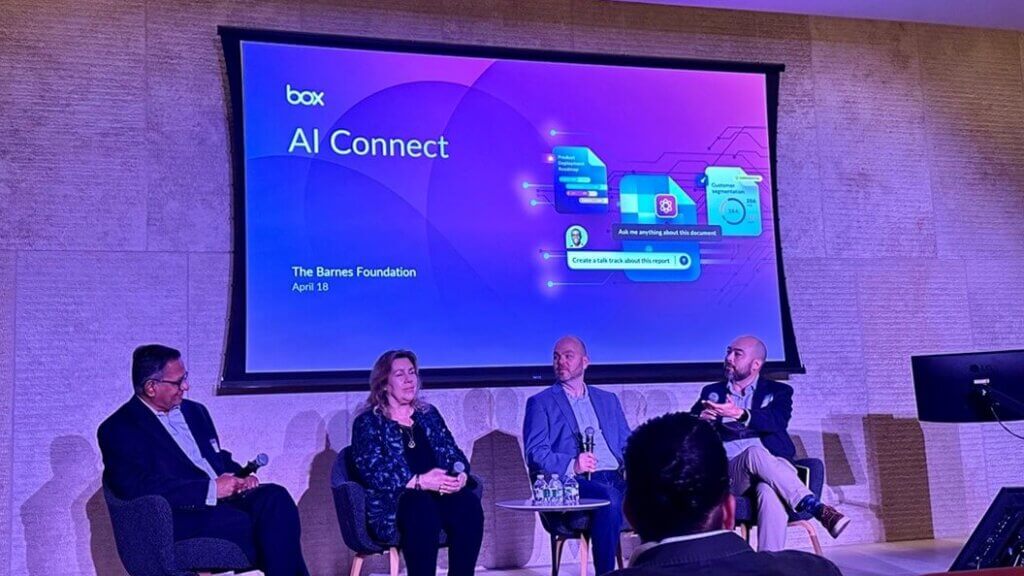An Update on the State of Generative AI
By now everyone has had a chance to play with a generative AI tool, right? You’ve asked ChatGPT to write an ode to lawn care in the style of a Shakespeare sonnet, or asked DALL-E to create an image of anthropomorphic potatoes fighting a duel with carrots, or asked Gemini to summarize a Gmail conversation so you didn’t have to read every message in the conversation.
What’s more to know in the world of generative AI? Plenty. Let’s talk it out.
First, the Rumors
Here’s what you can look forward to:
- ChatGPT 5 should be released soon, possibly this summer
- Apple’s next operating system should include Apple’s version of generative AI baked into it (or it will be Google’s Gemini baked into it, depending on which rumor you believe)
- The next set of Microsoft computers may be more powerful than Apple’s M chip-powered computers, thanks to chips intended to function with AI
- Except that later this year, Apple might update all its computers to have M4 chips intended to function with AI
The point is: all the major tech companies remain all in on AI.
And yet, user growth has flatlined. Companies that flooded the market are failing. Valuations are falling back to Earth.
What is real in the world of AI?
It’s here. It’s not going away. But it still hasn’t figured out what it’s actually going to be.
Hearing from Experts

This month I had the privilege of attending an AI-focused conference hosted by Box.com at the beautiful Barnes Museum in Philadelphia, PA.
The highlight was a panel that included a doctor of data science and AI from Carnegie Mellon University who has been following AI for over 30 years and has watched the entire evolution, a representative of the company that has created every Taylor Swift concert (plus nearly every other live performance you’ve ever interacted with), and the person leading the AI charge of Visit Philadelphia, a terrific tourism organization promoting this lovely city.

The main themes of this panel and the conference as a whole, as well as my general opinion on the topic, can be summarized as such:
- Most professionals use generative AI for content generation and not much else. They haven’t quite figured out what else to do with it. Here are some ideas:
- Aggregate key data into a spreadsheet and ask AI for insights.
- Show AI your competitors’ websites and ask what their key messaging is, who their key audiences are, what it’s getting right, etc.
- Ask AI what content topics those websites are covering that yours isn’t, to find possible gaps.
- Feed AI your content to ask how readable it is, whether it’s disseminating your message accurately, whether it has enough calls-to-action, etc..
- Extract insights out of documents. Have a long legal document and need a single piece of information out of it? Don’t struggle through the legalize to try to find that one piece of information — have AI do it for you.
- Use pre-AI tools like SEMRush and BuzzSumo to gather keywords your competitors are using and ads your competitors are running and then have AI compare them with yours to again find gaps.
- Upload a PDF of an infographic and ask AI to summarize the information.
- Create individual GPTs or Copilots for specific use cases. For example, do you need to produce a lot of custom thank you messages for donors? Create a GPT trained specifically for that purpose.
- One of the benefits of AI is being able to easily access and assess large amounts of information via natural language. But one of the big challenges to this is that much of your information likely lives in different places. Some conversions occurred via email, some in Slack, some in a project management tool. Some data is in Salesforce, some in spreadsheets, some saved in a document on your computer. Prepare for the next evolution in AI, which will be led by AI agents talking to all the various tools, communicating between them, aggregating together, all in natural language, all searchable.
- Also look forward to what that allows next: automated workflows. Back to the example involving donors — a donation comes in, and the AI agents work together to set a series of actions in motion, from adding the details of the donation in a tool where you store this information, comparing it against previous donations from that donor, using that previous history and everything it knows about the person to write a custom thank you email, getting that email in front of you so you can check it as a human and personalize it even further if necessary, sending the email, noting in the database system that the email was sent, and keeping track of any responses.
- Do not wholesale outsource any of your work to AI. It’s not there yet. It can create you a first draft of content, it can brainstorm for you the starting point of a plan, it can digest large bites of information. But none of what it does is ready to be the start and end of a project. All of it needs a guiding hand by you, the expert in your field.
What’s Next?
Test. Practice. Use it.
Dive deeper than having it write you a limerick for fun, or having it write an email to save time. Put aside an hour to brainstorm other use cases in your job, and then test those use cases. Research prompt and GPT suggestions. Really, truly learn it.
Test ChatGPT. Then test Google Gemini. Then test Claude. Then test Grok. Meta just added their own AI into all their social tools — go to Instagram and test away. And when you find one you like, be prepared to switch again at any moment as the others keep updating. Also keep in mind all the more specific options, like an AI tool designed specifically to write, edit, and assess legal briefs. There are dozens if not hundreds if not thousands of specialized tools popping up. Test them, too!
It’s not going away. It’s also not replacing you. Find the happy medium, and become more efficient.
And also, do yourself a favor and go to a museum near you. While you’ll be impressed with the images AI can generate, nothing compares to the astonishing creativity of humanity. Go immerse yourself in artistic brilliance, and then come home and ask DALL-E to render you an image for your next email newsletter.
Here’s what it just came up with for this article:



